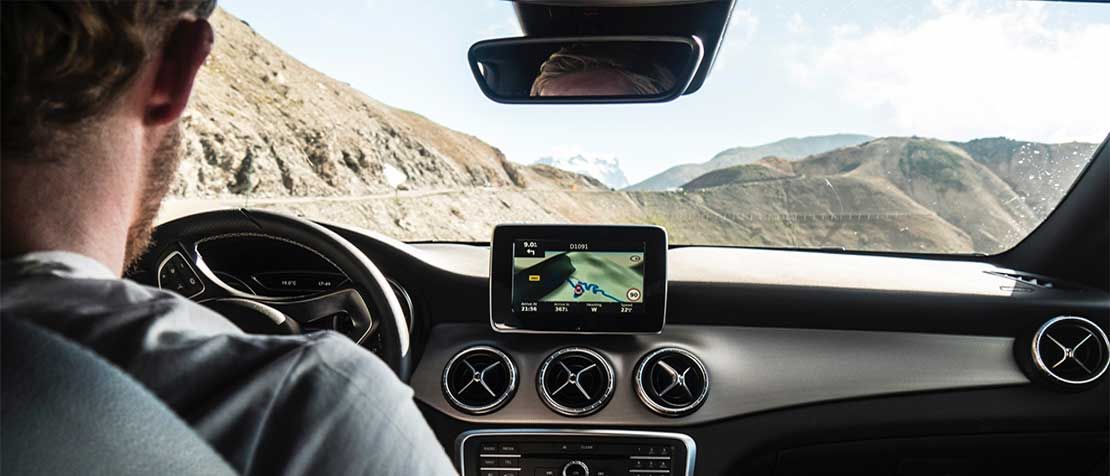
Transforming the driver experience: The connected technology under the hood of intelligent cars
There was a time when any talk of a new car among enthusiasts or potential buyers revolved around engine power, fuel efficiency and the sleek design and finish.
Today, that same conversation has expanded to include sustainability and a connected experience.
Consumers expect every aspect of their life to be connected to the internet, so why should one’s car be any different? Automakers are aware of this and are responding by partnering with technology and B2B companies to find innovative ways to satisfy the demands of customers, and avoid being disrupted.

As a result, newer models with embedded Internet of Things (IoT) connectivity and intelligent applications built-in are redefining the manufacturing landscape and the driving experience for consumers.
The surge in the global connected cars market not only impacts the auto industry, it also offers several opportunities for businesses – retailers, insurers, entertainment businesses and of course, the car makers themselves – to leverage the huge volumes of data generated and captured by connected cars to achieve new levels of customer loyalty and open up new revenue streams.
Multiple opportunities for multiple players
Connected cars harness the power of IoT sensors and connectivity, processing huge volumes of data every moment.
Swooping down on the valuable insights offered by this data, car manufacturers are now turning their attention to developing a car’s ability to connect with other vehicles, intelligent transport systems and smart city infrastructure. Through this vehicle-to-everything (V2X) connectivity, it is possible to truly transform the driver experience.
Enabling connected cars to communicate with other vehicles and the wider IoT ecosystem requires seamless, reliable connectivity.
Imagine driving to work, and your car alerts you to a great breakfast deal, based on your previous purchases at your favourite coffee shop, and then suggests a new route so that you’re able to make it there before you’re due at the office. Or, imagine not having to worry about remembering to pay for parking, as your car will take care of the payment automatically when you arrive at a parking lot or drive off.
Analysis of data collected by the connected car enables retailers and other businesses to provide their customers with new, highly personalised and targeted services, by decoding behaviours and preferences for customising content and products. The outcome? Enhanced brand loyalty, a stronger competitive position and new revenue opportunities.
Advanced technologies offering an edge to players
Enabling connected cars to communicate with other vehicles and the wider IoT ecosystem requires seamless, reliable connectivity. This is where the edge-to-cloud-connected, embedded SIM or eSIM will offer an edge to automakers. As the name suggests, eSIMs are built in the vehicle at the factory.
One key benefit is that they are not tied to a specific mobile network operator like a traditional SIM, enabling automakers to choose the network provider that best meets their needs at the best price point, after the car has left the factory. This flexibility often leads to cost savings.
“[Automakers’] future success – even survival – depends on embracing this transformation.”
Crucially, from a maintenance perspective, eSIM enables automakers to securely and remotely provision software updates over-the-air (OTA), without any disruption to the driver – while ensuring vehicle reliability and safety.
There are many value-add telematics-related services that can be offered to augment maintenance further across the lifespan of the vehicle, all enabled by eSIM connectivity, including insurance and breakdown services and remote diagnostics.
Collaborating for a connected, secure future
As connected cars steadily gain momentum, businesses and technologies of all kinds become linked through an interdependent ecosystem. This leaves automakers with two choices – embrace collaboration with the wider IoT ecosystem and the new business models and new revenue streams it enables, or risk becoming just a ‘box’, a provider of commoditized hardware. Their future success – even survival – depends on embracing this transformation.
“A true collaborative effort by the technology industry, manufacturers of all kinds of ‘things’, and the public sector can take us closer to a seamlessly and securely connected world.”
Tata Communications has been working with Microsoftto enable automotive manufacturers to offer consumers worldwide more seamless and secure driving experiences. We’re doing this by combining the IoT connectivity and network intelligence capabilities of Tata Communications MOVE™ with the Microsoft Connected Vehicle Platform; paving the way for new disruptive connected car services.
This integration means that players within the connected car ecosystem – from manufacturers, dealerships, insurers to fleet operators and others – will be able to bring to market new value-added services more quickly and cost-effectively, and ensure that they offer drivers reliable, consistent user experiences, anywhere in the world.
Connected cars are just one example of the massive changes that mobility and IoT innovations are enabling in how businesses operate, how they interact with their customers, and how people engage with the world around them.
A true collaborative effort by the technology industry, manufacturers of all kinds of ‘things’, and the public sector can take us closer to a seamlessly and securely connected world.
